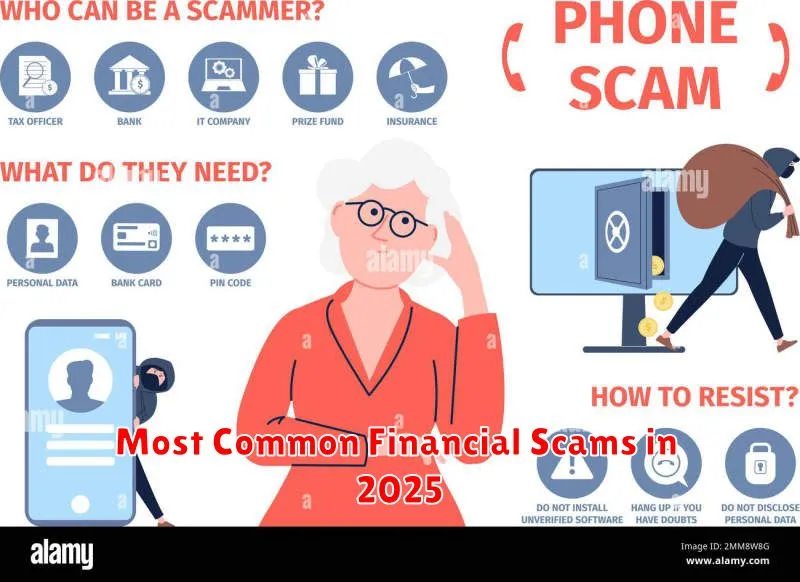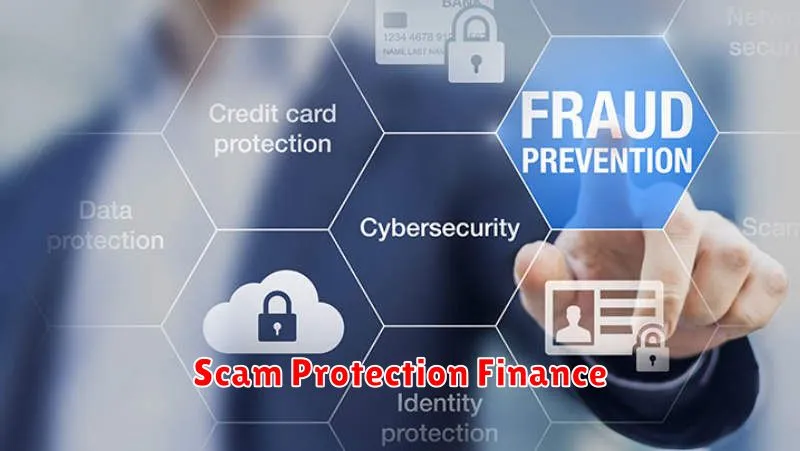In today’s fast-paced digital world, knowing how to avoid financial scams and safeguard your assets has become more crucial than ever. With an increasing number of fraudulent schemes targeting unsuspecting victims, it’s essential to equip yourself with the right knowledge and strategies to protect your money. This article delves into effective methods to identify scams, offering actionable tips to keep your finances secure and ensure your economic well-being. Whether you’re managing personal finances or running a business, staying informed and vigilant is key in combating these threats. Let us guide you in understanding the signs of financial fraud and taking proactive steps to prevent any risks to your hard-earned money.
Most Common Financial Scams in 2025

In 2025, the landscape of financial scams has evolved, making it crucial for individuals to stay informed and cautious. One of the most prevalent scams is the advanced fee fraud, where victims are asked to pay upfront fees for promised large sums of money that never materialize.
The rise of cryptocurrency scams continues to be a major concern. Fraudsters lure victims with promises of high returns on investments in fake or unstable cryptocurrencies. Another common scam involves fake investment opportunities, often presented through sophisticated and professional-looking websites.
Phishing scams remain a persistent threat. Scammers use emails or messages that appear to be from legitimate institutions to extract personal information from unsuspecting individuals. With advancements in technology, these communications now appear more convincing than ever.
Additionally, with the increasing use of AI-generated communications, scammers can tailor their deceit to mimic trusted contacts in victims’ lives, leading to more successful deceptive operations.
By recognizing these tactics and employing due diligence, individuals can better protect themselves against the pervasive threat of financial scams in 2025.
How to Spot Red Flags in Emails and Calls
Identifying red flags in emails and calls is crucial in protecting yourself from financial scams. Many scammers use deceptive communication tactics to impersonate trusted entities or to convey a sense of urgency, trying to trick you into divulging personal information.
In emails, look for inconsistencies such as spelling and grammatical errors, unfamiliar sender addresses, and links that direct you to non-secure websites. Scammers often use phishing methods to lure victims into clicking on malicious links. Always verify the sender’s email address carefully and hover over links to check their authenticity before clicking.
During suspicious phone calls, be alert for high-pressure sales tactics or threats. Scammers might call pretending to be from legitimate organizations, such as banks or government agencies, requesting sensitive information. Legitimate companies will never demand payment or sensitive information over the phone urgently.
Another critical step is to never share personal information over email or phone unless you initiated the contact with a verified entity. If you suspect a call or email, it’s wise to contact the company directly using a trusted phone number or email address to confirm the communication’s legitimacy.
By staying vigilant and recognizing these red flags, you can safeguard your information and protect your money from potential scams.
Keep Personal Information Safe Online
In today’s digital age, maintaining the security of your personal information is crucial to avoid falling victim to financial scams. Cybercriminals are constantly evolving their tactics to gain unauthorized access to sensitive data. Here are some effective strategies to protect your information online.
First and foremost, use strong passwords for your online accounts. A robust password typically includes a combination of uppercase and lowercase letters, numbers, and special characters. Additionally, refrain from using the same password across multiple sites to decrease the risk of hackers exploiting your credentials.
Implementing two-factor authentication (2FA) is another critical measure. This added layer of security requires not only a password but also a second form of verification, such as a text message or a fingerprint scan, significantly reducing the risk of unauthorized access.
Be cautious with the information you choose to share on social media platforms. Oversharing personal details like your birth date, address, or phone number can provide cybercriminals with the data they need to scam you. Adjust your privacy settings to ensure only trusted individuals have access to your personal details.
Regularly update your antivirus software and operating systems. These updates often include security patches that address vulnerabilities, keeping your devices protected against new threats.
Lastly, be vigilant about the websites you visit and the emails you open. Look for secure website indicators like the “https://” prefix in URLs and avoid clicking on suspicious links or attachments in unsolicited emails, as these might be phishing attempts aimed at stealing your information.
Use Two-Factor Authentication for Accounts
In the digital age, it is crucial to ensure the security of your online accounts to prevent financial scams. Implementing Two-Factor Authentication (2FA) is an effective way to enhance your account security. 2FA provides an additional layer of protection by requiring not only the usual password but also a second form of verification, such as a code sent to your phone or generated by an authentication app.
This extra step makes it significantly harder for cybercriminals to gain unauthorized access to your accounts, even if your password is compromised. By enabling 2FA, you can ensure that you are the only one who can access your accounts, thus keeping your financial information safe from potential scams.
To activate 2FA, visit the security settings of your selected account and follow the instructions to link your phone number or authentication app. Regularly updating your security settings and staying informed about the latest security features can further reinforce your account protection.
Regularly Monitor Bank and Credit Statements
To protect your finances from scams, it is critical to regularly monitor your bank and credit card statements. By doing so, you can quickly identify any unauthorized transactions and take immediate action to prevent further losses.
Ensure you check all details of each transaction, including the date, amount, and merchant. Pay close attention to any unfamiliar charges and contact your bank or credit card company for clarification if needed. This practice helps in identifying potential fraud at the earliest possible stage.
Moreover, consider setting up alerts for your accounts. Many banks and financial institutions offer alert services that will notify you of transactions above a certain amount or any suspicious activity, allowing you to respond promptly.
In today’s digital age, being proactive about reviewing your financial statements is a vital component of financial safety. It enables you to stay informed about your expenses and maintain control over your financial well-being.
Report Suspicious Activity Immediately
In the fight against financial scams, it is crucial to act swiftly and report any suspicious activity as soon as it is detected. Prompt reporting can help prevent potential financial loss and can also aid authorities in taking action to protect others from falling victim to similar scams.
If you encounter unfamiliar transactions or fishy requests for personal information, do not hesitate to contact your financial institution or local law enforcement. Providing them with detailed information about the suspicious activity can assist in a thorough investigation.
Always be vigilant and stay informed about common scam tactics. Engaging with official resources available from financial authorities can also provide guidance on how to safely report and handle fraudulent activities. By being proactive, you contribute to a safer financial environment for everyone.
Educate Family Members on Digital Safety
In the digital age, it is crucial to educate family members on the importance of digital safety. Many financial scams occur online, and awareness can make a significant difference in protecting personal and financial information.
Start by informing family members about the common tactics scammers use, such as phishing emails and fake websites. Emphasize the importance of not clicking on suspicious links or providing personal information to unsolicited requests.
Encourage the use of strong, unique passwords for each online account and suggest utilizing two-factor authentication whenever possible. This extra layer of security can help safeguard personal information even if passwords are compromised.
Help them understand how to identify secure websites. They should look for URLs that begin with “https://” and a padlock icon in the address bar. This ensures that the site encrypts the transmitted data, making it more difficult for scammers to intercept.
Regularly discuss and share stories about the latest scams and how they are evolving. This will keep them informed and vigilant about potential threats. Encourage a culture of open communication where they feel comfortable asking questions or reporting suspicious activity.
Stay Updated with Scam Trends from Authorities
In today’s digital landscape, staying informed about the latest scam trends is crucial to safeguarding your financial assets. One effective way to accomplish this is by regularly consulting the resources provided by official authorities such as the Federal Trade Commission (FTC), the Consumer Financial Protection Bureau (CFPB), and other governmental bodies dedicated to consumer protection.
These organizations frequently release alerts and reports about emerging scams, techniques employed by fraudsters, and precautionary measures you can adopt. By subscribing to newsletters or following their social media channels, you can receive timely updates on potential threats and advice on how to react.
Furthermore, authorities often collaborate with financial institutions to enhance public awareness about fraudulent schemes. This partnership enables consumers to access credible information efficiently. Staying proactive and informed by relying on these trusted sources is an essential part of a broader strategy to protect your finances from scams.

